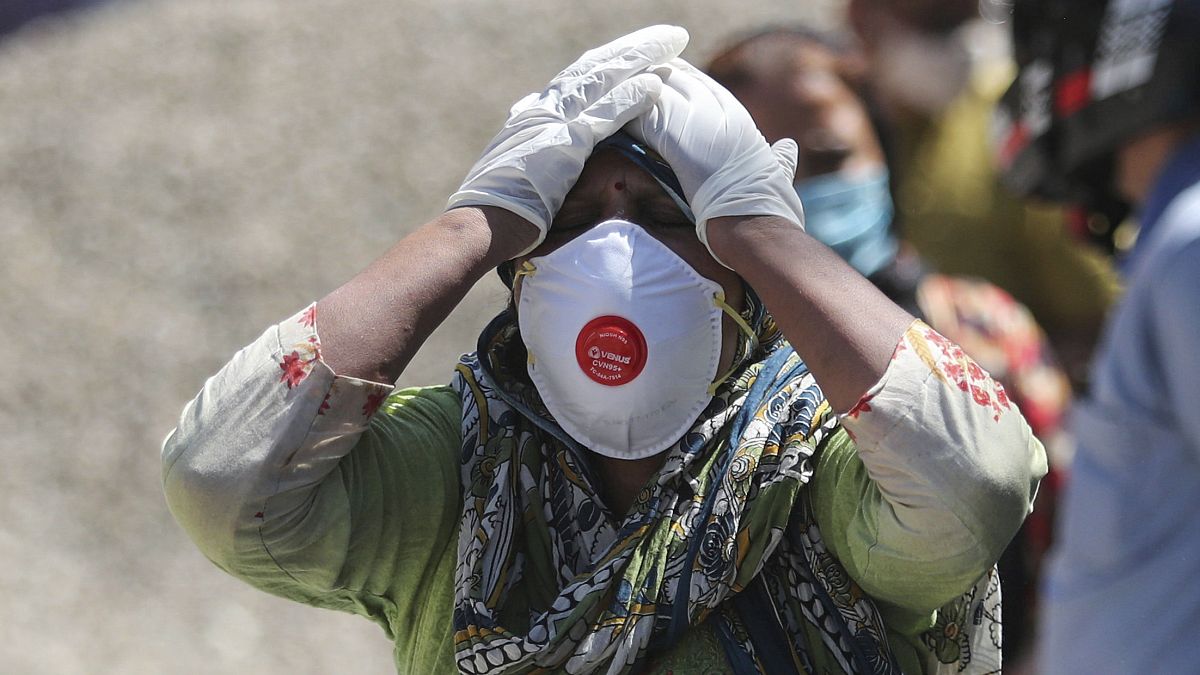Experts believe India won't reach the peak of this COVID wave until the second week of May, by which time there could be more than half a million cases a day.
India's latest surge of COVID-19 infections has repeatedly shattered global daily records. This has given rise to numerous harrowing stories, whether of overwhelmed crematoriums, people dying before they reach treatment, or of those forced to literally beg for air.
On Sunday alone, another 349,641 people tested positive for the disease, while 2,767 people died, bringing the total number of fatalities in the nation of 1.3 billion to 192,311. This picture, however, is particularly grim when experts remind us that the enormous official death toll is likely underreported.
"India celebrated too early due to five months of reducing infections and high vaccine capacity," Shahid Jameel, a virologist and director of the Trivedi School of Biosciences at Ashoka University, told Euronews.
He said the downfall was ultimately a "coming together of multiple factors" including that of vaccine hesitancy.
"We were caught unprepared," he said.
How did this happen?
According to Jameel, there are three key factors driving the latest surge: complacency, variants and "large spreader events".
Complacency exists at the individual, government and public policy levels, he said, while the development of more infectious variants pose further danger as they could potentially "break through existing immunity".
Variants currently of concern include Kent B117, which has spread rapidly across the UK and dozens of other countries, as well as the B.1.617 variant, which was first detected in India. It is not currently known whether the latter is more or less contagious, or how it will respond to vaccination.
Meanwhile, large events planned without enforcing social distancing and mask-wearing measures have also borne the brunt of the blame for the newest wave.
These include events that "built up the momentum", said Jameel, pointing to large weddings, cricket matches, state elections and religious festivals.
In March, millions of Hindus gathered on the banks of the Ganges to celebrate the Kumbh Mela festival, many shrugging off COVID measures.
Has India reached its peak of infections?
Not yet. Despite already hitting eye-watering highs of 300,000 plus cases per day, this is still expected to climb.
Experts believe case numbers will begin to plateau at around the second week of May when infections reach 500,000 to 900,000 each day.
"The biggest concern is that the healthcare system is overwhelmed," said Jameel. "Hospital beds, oxygen, ICUs and most importantly healthcare workers are severely stretched. This is already causing mortality beyond what the virus is capable of doing."
Will India need to rely on vaccination to get out of this?
Vaccination is just one part of flattening the curve, as it has been in other countries around the world hit hard by the pandemic.
These include a return to local lockdowns that ensure support for livelihoods, along with compliance with masks. Jameel said this was an "essential" part of flattening the curve, but noted that India's dense population makes it difficult to distance.
